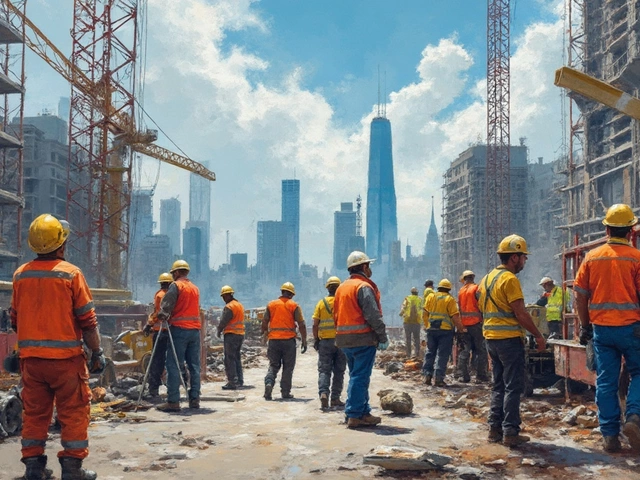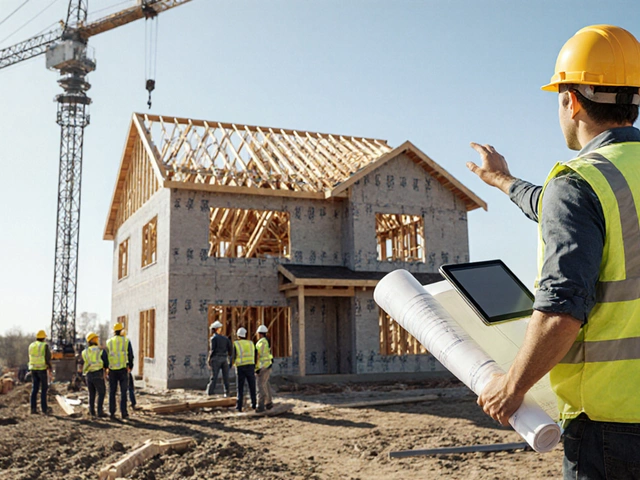Concrete Types Explained – Pick the Right Mix for Your Build
Concrete is the backbone of almost every construction project, but not all concrete is the same. Choosing the wrong mix can lead to cracks, extra cost, or a finish that just won’t work. Below is a quick, no‑jargon rundown of the most common concrete types and how they fit into typical jobs like foundations, driveways, or slabs.
1. Plain (Standard) Concrete
Plain concrete is the basic mix of cement, water, sand, and gravel. It’s great for foundations, footings, and any structure that won’t see a lot of wear. Think of the solid slab under a house – plain concrete gives the strength you need without extra additives. It’s the cheapest option, but it can be prone to cracking if the ground shifts, so proper site prep is key.
2. Reinforced Concrete
When steel bars (rebar) or welded wire mesh are added, you get reinforced concrete. The steel takes tensile stresses while the concrete handles compression. This combo is standard for driveways, garage floors, and any load‑bearing element. Reinforced concrete can handle heavy trucks, so it’s the go‑to for commercial slabs and multi‑storey building columns.
If you’re dealing with a foundation that might move (like the ones discussed in our articles on foundation repair), reinforced concrete adds that extra safety net. The steel helps keep the slab from splitting apart when the soil shifts.
3. Pre‑cast Concrete
Pre‑cast units are manufactured in a factory, cured, then shipped to the site. You’ll see them in staircases, wall panels, and decorative elements. Because they cure in controlled conditions, you get consistent strength and a smooth finish without on‑site guesswork. It’s a bit pricier than pouring on site, but you save on labor and weather delays.
4. High‑Strength Concrete
For projects that need extra load capacity, high‑strength concrete adds more cement and sometimes silica fume or fly ash. This mix can reach 6,000 psi or higher, making it perfect for high‑rise columns, bridge decks, and industrial floors. It’s also used when the concrete will be exposed to aggressive chemicals or freeze‑thaw cycles.
5. Lightweight Concrete
Lightweight concrete swaps normal gravel for expanded clay, shale, or pumice. The result is a mix that’s up to 40% lighter, which cuts the dead load on a structure. It’s ideal for roof decks, precast panels, and any place where reducing weight helps the overall design. It’s not as strong as standard concrete, so reserve it for non‑critical applications.
6. Decorative Concrete
Stain, color, stamping, or polishing can turn a plain slab into a patio or showroom floor that looks like stone, brick, or wood. The base mix is usually plain or reinforced, but the finish adds aesthetic value. These finishes are great for outdoor patios, commercial lobbies, or any space where you want a polished look without the cost of natural stone.
When you’re picking a concrete type, remember three quick questions: What load will it carry? How much exposure to weather or chemicals will it have? And what finish do you need? Answering these will narrow your choice and keep your budget in check.
Need help deciding which mix fits your project? Our team at Lime Hillock Construction Material Resources can recommend the right quarry‑sourced limestone aggregate and mix design, whether you’re laying a new driveway or pouring a reinforced slab for a commercial build.
Best Cement for Foundation Repair: What Actually Works?

Confused about which cement is best for fixing your foundation? This article breaks down different cement types, explains what makes one better than the other, and arms you with insider tips for strong, lasting repairs. Discover which products pros use and why. Learn how to avoid common foundation repair slip-ups. Turn shaky ground into peace of mind with actionable advice you won’t get at the hardware store.
read more



